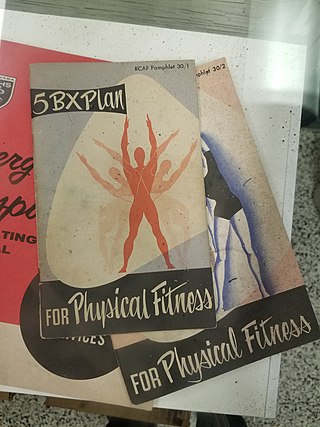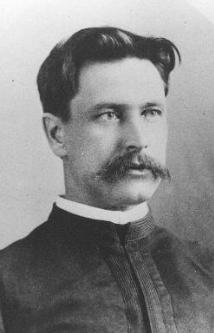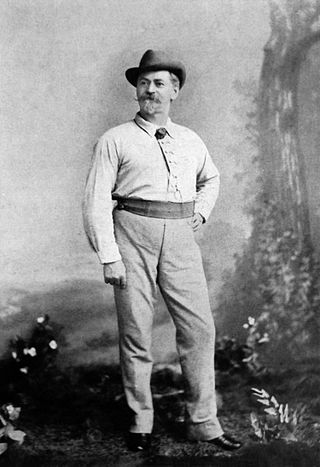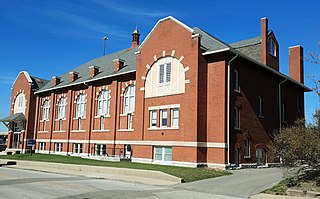This article needs additional citations for verification .(November 2019) |
Physical culture, also known as body culture, [1] is a health and strength training movement that originated during the 19th century in Germany, [1] the UK and the US.
This article needs additional citations for verification .(November 2019) |
Physical culture, also known as body culture, [1] is a health and strength training movement that originated during the 19th century in Germany, [1] the UK and the US.
The physical culture movement in the United States during the 19th century owed its origins to several cultural trends. [2]
In the United States, German immigrants after 1848 introduced a physical culture system based on gymnastics that became popular especially in colleges. Many local Turner clubs introduced physical education (PE) in the form of 'German gymnastics' into American colleges and public schools. The perception of Turner as 'non-American' prevented the 'German system' from becoming the dominating form. They were especially important mainly in the cities with a large German-American population, but their influence slowly spread. [3]
By the late 19th century reformers worried that sedentary white collar workers were suffering from various "diseases of affluence" that were partially attributed to their increasingly sedentary lifestyles. In consequence, numerous exercise systems were developed, typically drawing from a range of traditional folk games, dances and sports, military training and medical calisthenics.
Physical culture programs were promoted through the education system, particularly at military academies, as well as via public and private gymnasiums.
Industry began the production of various items of exercise-oriented sports equipment. During the early and mid-19th century, these printed works and items of apparatus generally addressed exercise as a form of remedial physical therapy.
Certain items of equipment and types of exercise were common to several different physical culture systems, including exercises with Indian clubs, medicine balls, wooden or iron wands and dumbbells.
Combat sports such as fencing, boxing, savate and wrestling were also widely practiced in physical culture schools and were touted as forms of physical culture in their own right.
The Muscular Christianity movement of the late 19th century advocated a fusion of energetic Christian activism and rigorous physical culture training.
As physical culture became increasingly popular and profitable, there arose intense national and then international competition amongst the founders and/or promoters of various systems. This rivalry became informally known as "the Battle of the Systems". Both public gyms and educational institutions tended to take an eclectic approach, whereas private physical culture clubs and organizations often promoted particular exercise systems initially based on ethnocentric and cultural links.
Early private establishments were based on ethnic and cultural affiliation, such as the Turners and Sokol movements. These ethnocentric systems in America were centered on integration, and later stood apart from their origin countries, having very little contact with them by the time World War I emerged. Later outfits were based on preference to what each system offered as a matter of practicality, with some systems retaining in their names historical references to their geographic origin.
The German Turnverein movement promoted a system of what became known as "heavy gymnastics", meaning strenuous exercises performed with the use of elaborate equipment, such as pommel horses, parallel bars, and climbing structures. The Turnverein philosophy combined physical training with intellectual pursuits and with a strong emphasis upon German culture. Numerous events in modern competitive gymnastics originated in, or were popularized by the Turnverein system.
The Czech Sokol movement for physical culture was largely inspired by Turnverein.
By contrast with the German and Czech systems, the "Swedish System" founded by Pehr Henrik Ling promoted "light gymnastics", employing little, if any apparatus and focusing on calisthenics, breathing and stretching exercises as well as massage.
At the turn of the 20th century, bodybuilder and showman Eugen Sandow's system, based upon weight lifting, enjoyed considerable international popularity, while Edmond Desbonnet and George Hebert popularized their own systems within France and French-speaking countries. Bernarr Macfadden's system became especially popular within the United States, via the promotion carried out through his publishing empire, particularly its flagship magazine itself titled "Physical Culture."
Other notable advocates of physical culture include Jørgen Peter Müller and Mary Bagot Stack. [4]
A physical culture practice, informally known as "physie" (pronounced "fizzy") developed in Australia in the 19th century and continues to this day, especially for women. It combines elements of march, rhythmic gymnastics and dance, with a focus on good posture and is aimed at young girls and women, from pre-school age to seniors. [5]
The original physie school [6] was the medical gymnasium Bjelke-Petersen Bros, founded in Hobart in 1892 by Hans Christian Bjelke-Petersen. [7] It has been in continuous operation since that time, becoming the Bjelke-Petersen School of Physical Culture Ltd. in 2011.[ citation needed ]. BJP is the largest association of physie within Australia.
In March 1934, a "physical culture demonstration" was performed at the Theatre Royal in Adelaide, by Weber, Shorthose & Rice. [8]
Other leading historical schools include the Edith Parsons School of Physical Culture, founded in Sydney in 1961; and the Burns Association of Physical Culture, founded in Sydney in 1968, both still in operation.[ when? ]. Other schools founded later include the Western Zone Physical Culture (1972), and The Australian Physie and Dance Association (APDA) (2011).[ citation needed ] United Physie was founded in 2023.
Competition structure varies between associations, but generally there are local, state and national competitions for teams and individuals. National championships are typically held at prestigious venues such as Sydney Opera House or the Sydney International Convention Centre.
Considerable academic research into 19th-century physical culture has been undertaken since the 1980s, and numerous articles, theses and books have been produced addressing the topic from various perspectives. [9]
A number of contemporary strength and health training programs are based directly upon, or draw inspiration from various physical culture systems.
The historic Hegeler Carus Mansion in LaSalle, Illinois features a basement gymnasium that is believed to be a uniquely preserved example of a late-19th-century turnverein physical culture training facility.
Modern collections of antique physical culture apparatus include those of the Joe and Betty Weider Museum of Physical Culture, part of the H.J. Lutcher Stark Center for Physical Culture and Sports at the University of Texas at Austin and the Gymuseum collection at the Forteza Fitness and Martial Arts studio in Ravenswood, Chicago.

Gymnastics is a type of sport that includes physical exercises requiring balance, strength, flexibility, agility, coordination, artistry and endurance. The movements involved in gymnastics contribute to the development of the arms, legs, shoulders, back, chest, and abdominal muscle groups. Gymnastics evolved from exercises used by the ancient Greeks that included skills for mounting and dismounting a horse, and from circus performance skills.

Turners are members of German-American gymnastic clubs called Turnvereine. They promoted German culture, physical culture, and liberal politics. Turners, especially Francis Lieber, 1798–1872, were the leading sponsors of gymnastics as an American sport and the field of academic study.

Calisthenics or callisthenics (/ˌkælɪsˈθɛnɪks/) is a form of strength training that utilizes an individual's body weight as resistance to perform multi-joint, compound movements with little or no equipment.

Rhythmic gymnastics is a sport in which gymnasts perform on a floor with an apparatus: hoop, ball, clubs, ribbon and rope. The sport combines elements of gymnastics, dance and calisthenics; gymnasts must be strong, flexible, agile, dexterous and coordinated. Rhythmic gymnastics is governed by the International Gymnastics Federation (FiG), which first recognized it as a sport in 1963. It became an Olympic sport in 1984, with an individual all-around event. The group all-around competition was added to the Olympics in 1996. At the international level, rhythmic gymnastics is a women-only sport. The most prestigious competitions, besides the Olympic Games, are the World Championships, World Games, European Championships, European Games, the World Cup Series and the Grand Prix Series. Gymnasts are judged on their artistry, execution of skills, and difficulty of skills, for which they gain points. They perform leaps, balances, and rotations along with handling the apparatus.

Aerobic exercise is physical exercise of low to high intensity that depends primarily on the aerobic energy-generating process. "Aerobic" is defined as "relating to, involving, or requiring oxygen", and refers to the use of oxygen to meet energy demands during exercise via aerobic metabolism adequately. Aerobic exercise is performed by repeating sequences of light-to-moderate intensity activities for extended periods of time. Examples of cardiovascular or aerobic exercise are medium- to long-distance running or jogging, swimming, cycling, stair climbing and walking.

Pilates is a type of mind-body exercise developed in the early 20th century by German physical trainer Joseph Pilates, after whom it was named. Pilates called his method "Contrology". It is practiced worldwide, especially in countries such as Australia, Canada, South Korea, the United States and the United Kingdom. Pilates uses a combination of around 50 repetitive exercises to spur muscle exertion. Each exercise flows from the "five essentials": breath, cervical alignment, rib and scapular stabilization, pelvic mobility, and utilization of the transverses abdomens. Each exercise is typically repeated three to five times. As of 2023, over 12 million people practice Pilates.

The Royal Canadian Air Force Exercise Plans are two exercise plans developed for the Royal Canadian Air Force (RCAF) by Dr. Bill Orban in the late 1950s, first published in 1961. The 5BX plan was developed for men; a corresponding program was developed for women under the name XBX and the two plans were subsequently published together as one book, which was republished in 2016. The popularity of the programs in many countries around the world helped to launch modern fitness culture.
Mens sana in corpore sano is a Latin phrase, usually translated as "a healthy mind in a healthy body". The phrase is widely used in sporting and educational contexts to express that physical exercise is an important or essential part of mental and psychological well-being.
The Battle of the Systems was a controversy over the most effective system of exercise and calisthenics that spanned from the 1830s to the early 1920s, consisted of different systems of exercise mostly in a gymnastic or calisthenic-type format. It raged in the United States as states mandated physical education systems.

Indian clubs, or meels, are a type of exercise equipment used to present resistance in movement to develop strength and mobility. They consist of juggling-club shaped wooden clubs of varying sizes and weights, which are swung in certain patterns as part of a strength exercise program. They can range in weight from a few pounds each to special clubs that can weigh as much as up to 100 pounds. They were used in carefully choreographed routines in which the clubs were swung in unison by a group of exercisers, led by an instructor, similar to 21st-century aerobics or zumba classes. The routines would vary according to the group's ability along with the weights of the clubs being used. When the 19th-century British colonists came across exercising clubs in India, they named them Indian clubs.

Pehr Henrik Ling pioneered the teaching of physical education in Sweden. Ling is credited as the father of Swedish massage.

Herman John Koehler was an American football coach, athletics administrator, and United States Army officer. He served as the head football coach at the United States Military Academy from 1897 to 1900, compiling a record of 19–11–3.

A gym, short for gymnasium, is an indoor venue for exercise and sports. The word is derived from the ancient Greek term "gymnasion". They are commonly found in athletic and fitness centres, and as activity and learning spaces in educational institutions. "Gym" is also the commonly used name for a "fitness centre" or health club, which is often an area for indoor recreation. A "gym" may include or describe adjacent open air areas as well. In Western countries, "gyms" often describe places with indoor or outdoor courts for basketball, hockey, tennis, boxing or wrestling, and with equipment and machines used for physical development training, or to do exercises. In many European countries, Gymnasium also can describe a secondary school that prepares students for higher education at a university, with or without the presence of athletic courts, fields, or equipment.

George Brosius was a German-American gymnastics teacher associated from 1854 to 1915 with the Milwaukee Turnverein. He served in the Union Army from 1861 to 1864. He introduced physical education to the Milwaukee public schools in 1875 and supervised it until 1883. His crowning achievement was leading seven members of the Milwaukee Turnverein to the international gymnastics tournament in Frankfurt am Main in 1880, where they won the 2nd, 3rd, 5th, 13th, and 21st individual prizes. He served as director of the American Gymnastic Union's Normal College of Physical Education in Milwaukee from 1875 to 1899.
Street workouts are a physical activity performed in outdoor parks or public facilities. The movement behind street workouts became popular in Russia, Israel, Myanmar, Morocco, Eastern Europe, and the United States, especially in New York City, Los Angeles, Chicago,Uzbekistan, Philadelphia, Miami, Baltimore, Washington, D.C., and other urban East Coast neighborhoods. It is a combination of athletics, calisthenics, and sports. "Street workout" is a modern name for calisthenics in outdoor parks. There are also street workout teams and organized competitions for exercises such as pull-ups, chin-ups, push-ups, dips, rows, muscle-ups, sit-ups and squats. A street workout also involves static (isometric) holds such as the human flag, front lever, back lever, L-sit and planche.

Fitness culture is a sociocultural phenomenon surrounding exercise and physical fitness. It is usually associated with gym culture, as doing physical exercises in locations such as gyms, wellness centres and health clubs is a popular activity. An international survey found that more than 27% of world total adult population attends fitness centres, and that 61% of regular exercisers are currently doing "gym-type" activities. Getting and maintaining physical fitness has been shown to benefit individuals' inner and outer health. Fitness culture has become highly promoted through modern technology and from the rising popularity of social media platforms.

Outdoor fitness consists of exercise undertaken outside a building for the purpose of improving physical fitness. It contrasts with exercise undertaken inside a gym or health club for the same purpose. The activity may be undertaken in a park, in the wilderness, or other outdoor location. The popularity of outdoor fitness grew rapidly in the second-half of the twentieth century and grew as a commercial consumer market in the twenty-first century.

Physical training has been present in human societies throughout history. Usually, it was performed for the purposes of preparing for physical competition or display, improving physical, emotional and mental health, and looking attractive. It took a variety of different forms but quick dynamic exercises were favoured over slow or more static ones. For example, running, jumping, wrestling, gymnastics and throwing heavy stones are mentioned frequently in historical sources and emphasised as being highly effective training methods. Notably, they are also forms of exercise which are readily achievable for most people to some extent or another.

South Side Turnverein Hall is a historic social club and gymnasium in the Bates-Hendricks neighborhood of Indianapolis, Indiana, affiliated with the city's German-American community. It was built in 1900 by prominent architects Vonnegut & Bohn, whose managing partners Bernard Vonnegut, Sr. and Arthur Bohn were members of the burgeoning German-American community in Indianapolis. The architects were also known for designing the Athenæum, another German-American social club in the city. The South Side Turnverein was an important gathering place for Indianapolis' south side German community until its decline in the 1940s. It was sold to investors in 1978 to be used as an athletic club.